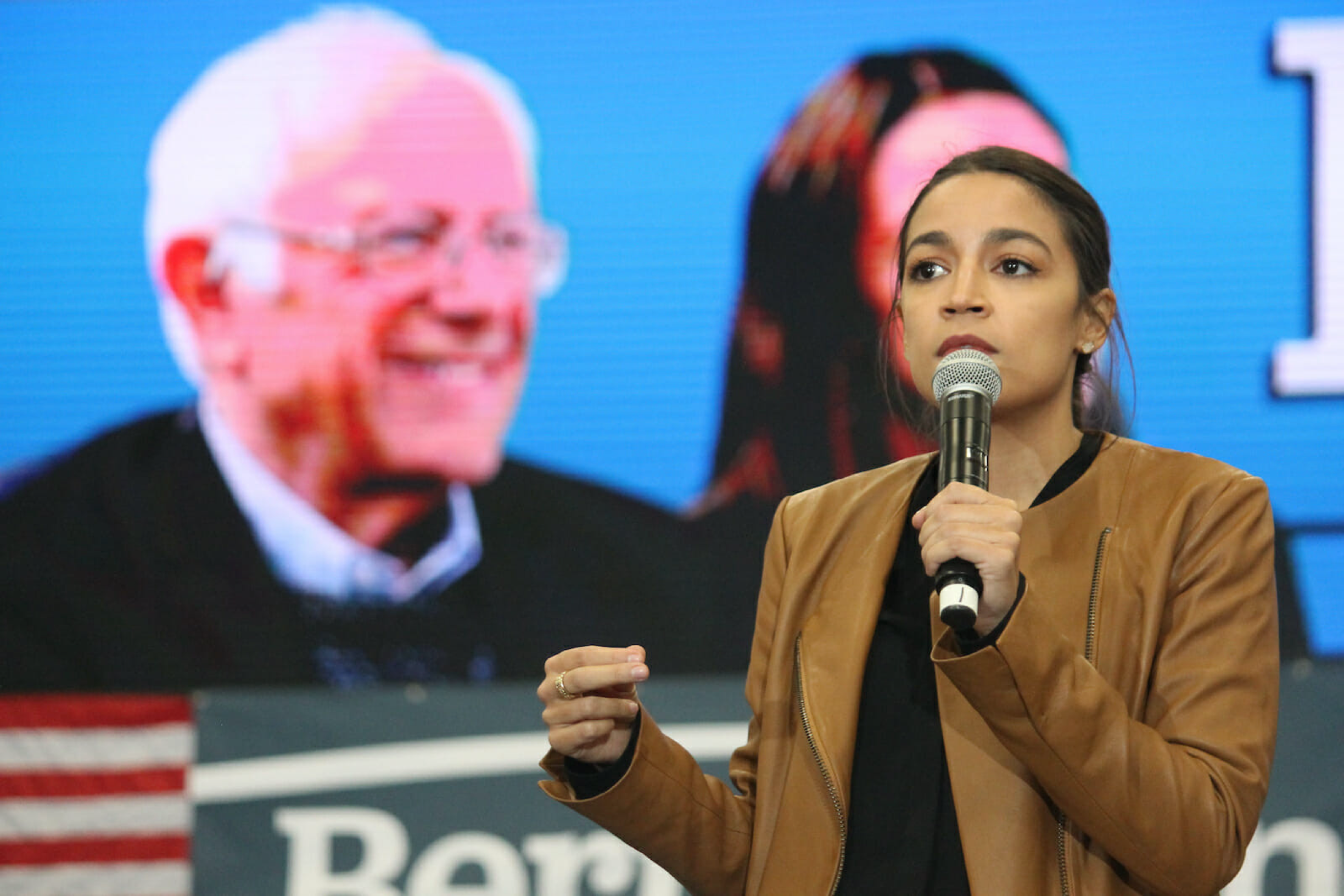F or our whole lives, we have heard about climate change and seen the effect it has on our daily lives. From carbon footprints to the proposed timeline of how long the Earth has to survive, we have heard it all. We have even attempted to mobilize, holding various climate change marches across the world, led by teen activists such as Greta Thunberg. However, it still seems that our hard work is fruitless without legal action. The Green New Deal would have been a saving grace for the fight on climate change.
T he Green New Deal was first introduced by Congresswoman Alexandria Ocasio-Cortez and Senator Edward J. Markey, both Democrats. The ultimate goal of the Green New Deal is to reduce greenhouse gas emissions in a way that would also tackle societal inequality and racial injustice. The legislation would have pushed the federal government to gradually wean the United States off of fossil fuels in a sustainable way to support the economy by creating high-paying jobs to fill the place of those lost in the fossil fuel industry. The resolution stems from two major reports issued by the United Nations and by U.S. government scientists. Their findings alert us to the fact that if global temperatures continue to rise, devastating forest fires, droughts, and heatwaves will become the norm. The United States could also lose billions of dollars by the end of the century if this trajectory continues. Unfortunately, carbon emissions are still increasing globally at a rate of 2.7%.
The main provisions stated in the Green New Deal legislation are that all net carbon emissions need to be zero by the year 2050, and there needs to be a 20% decrease in greenhouse gas emissions from 2010 levels in the next decade. To create environmentally-friendly and progressive jobs, the legislation called for a 10-year long plan, involving steps such as completing sourcing all of the electricity in the United States from renewable and zero-emission sources, one being solar panels. Green New Deal legislation would have also called for the federal government to digitize the nation’s power grid, and do an overhaul on transportation, converting to electrical vehicles and high-speed railroads.
The jobs created by eliminating fossil fuel jobs would have supplied mandatory training and newer economic development to areas that rely on fossil fuel jobs. There would also have been a government mandate to provide higher education to the communities most affected by the Green New Deal, with one proposal from Senator Bernie Sanders being that the government would provide states with $47 billion dollars annually to pay for two-thirds of tuition for students at public colleges and universities, with a new tax on Wall Street to fund the program. Green New Deal legislation would have also done a complete revision of labor laws.
There are many misconceptions about the Green New Deal fostered by the opposition. This leads some people to believe that any legislation is a radical socialist scheme that would “take away your airplane rights,” according to President Trump, and would have “banned livestock,” according to Sen. Tom Cotton (R-AR). Ocasio-Cortez’s version didn’t mention any of these things. Although she sent a more extreme version, which included lending economic resources to those who are “unwilling to work,” to reporters, she later disavowed that version. The resolution did, however, call for the federal government to make an enormous shift in how we work and live.
Proponents of the Green New Deal have always been somewhat vague on the true costs, but opponents and proponents alike agree that any implementation will be expensive, even as much as the entire American economy put together. Supporters of the Green New Deal argue that it would actually save taxpayers $2 trillion over the next decade. Ocasio-Cortez acknowledges that the Green New Deal would be expensive, but however, the economic prosperity would cause her legislation to essentially pay for itself. There would have also been an exponential increase in public ownership. The legislation would have provided “in a way that ensures that the public receives appropriate ownership stakes and returns on investment, adequate capital (including through community grants, public banks, and other public financings), technical expertise, supporting policies, and other forms of assistance to communities, organizations, federal, state, and local government agencies, and businesses working on the Green New Deal mobilization,” according to the text of the legislation.
In March of last year, the U.S. Senate rejected the Green New Deal, with Republicans presenting a proposal to “reduce dependence on fossil fuels to combat climate change as a far-left idea,” according to the Washington Post. The measure failed on a 57-to-0 vote, with all Republicans and four Democrats blocking the resolution. The vote came in the midst of historic flooding in the Midwest causing repeated warnings from agencies in the Trump administration about the economic and environmental impact of failing to deal with global warming, and yet Republicans dismissed this vital proposal.
The Green New Deal, although first conceived two years ago, addresses racial discrimination and societal inequality. Not only does the Green New Deal work towards a clean economy, but it also promotes economic equality and addresses racial inequality. The Green New Deal found a way to tackle three plaguing issues at once, and if it passed, it would have promoted much needed progressive societal changes needed for a 21st century America.




